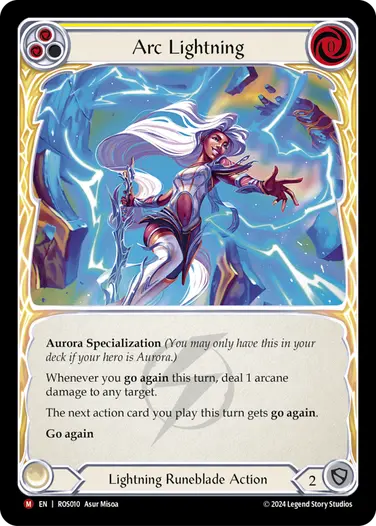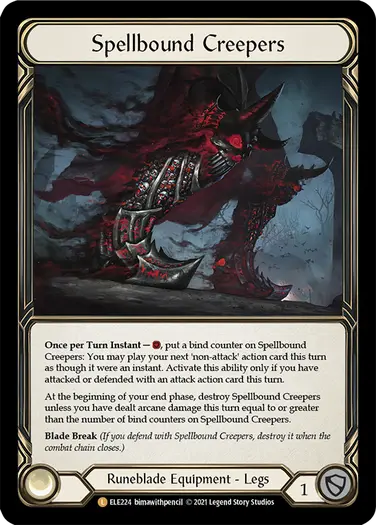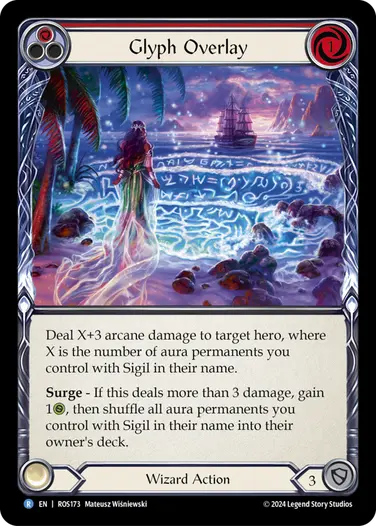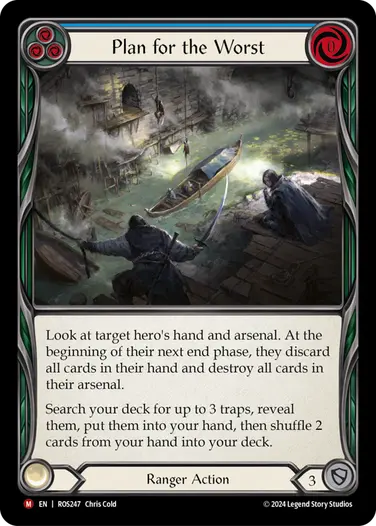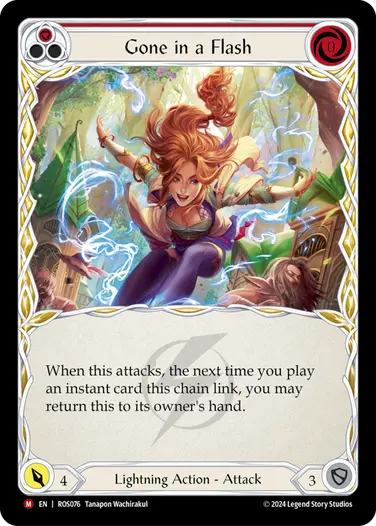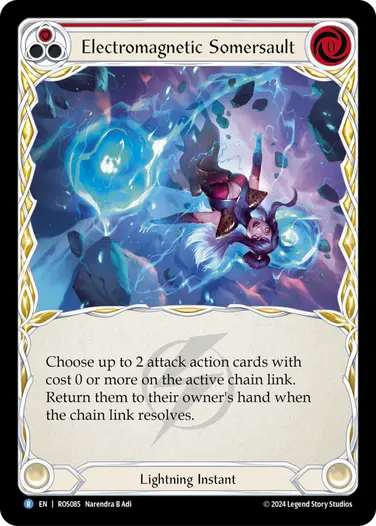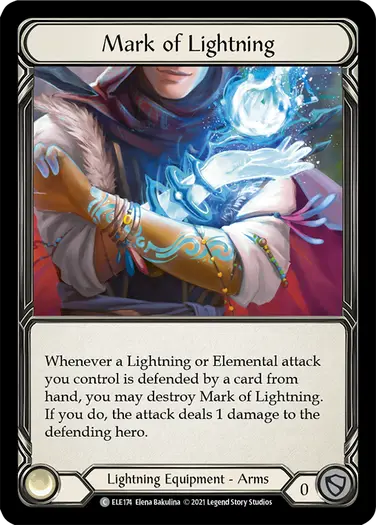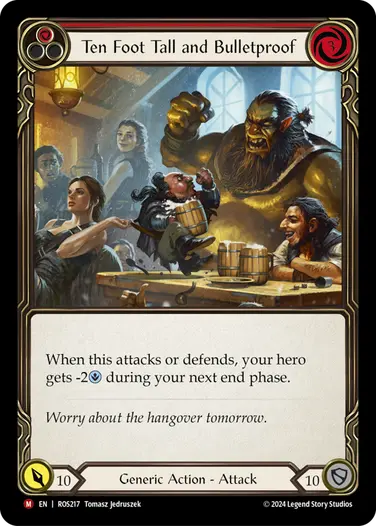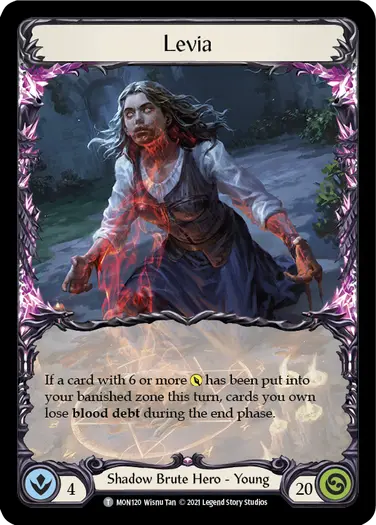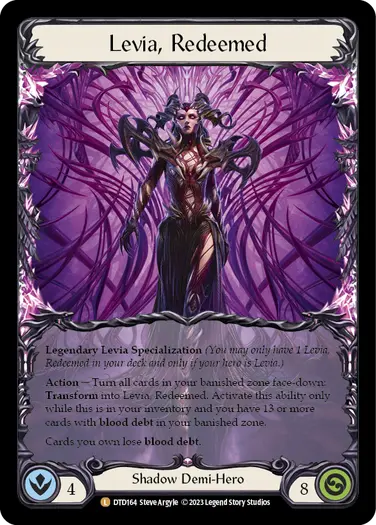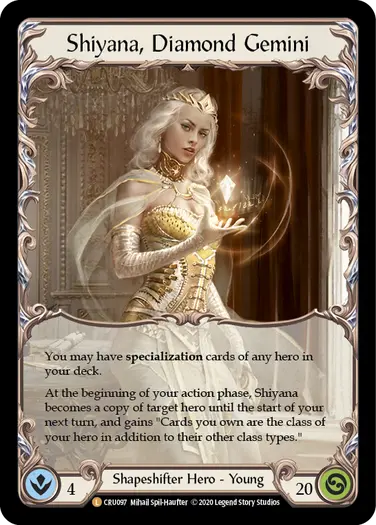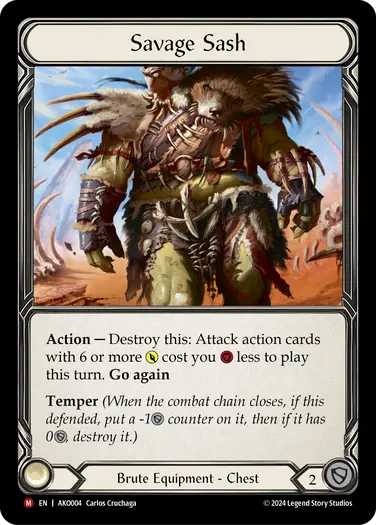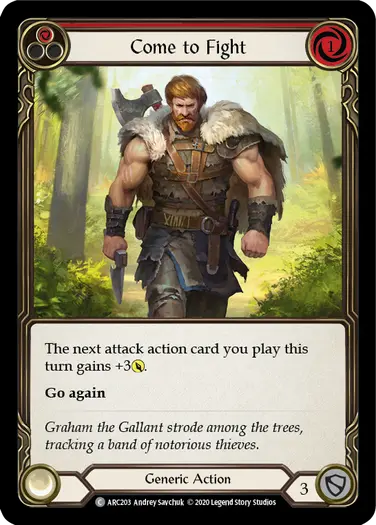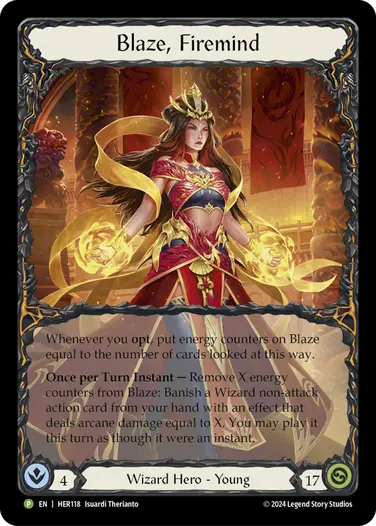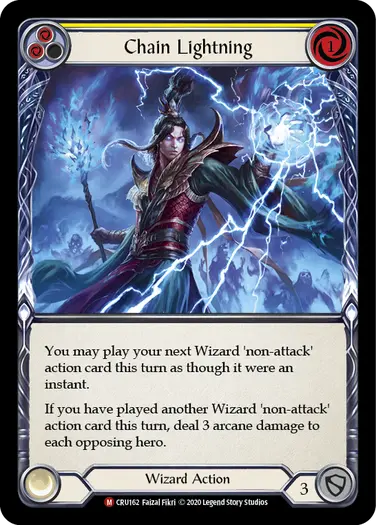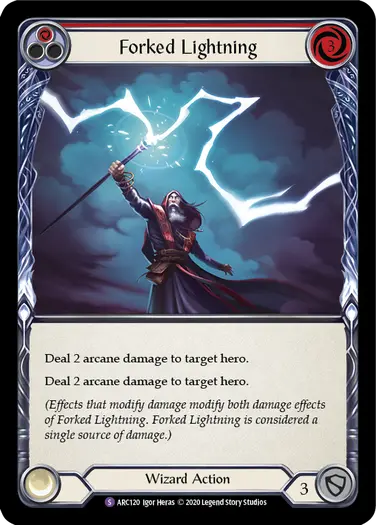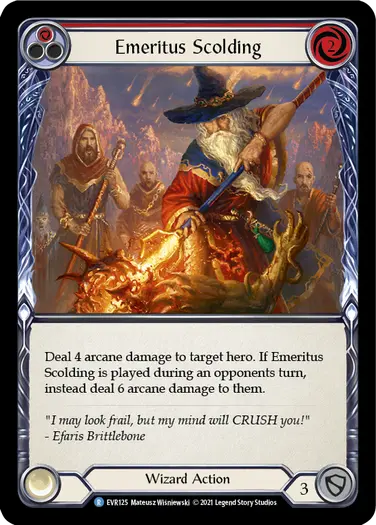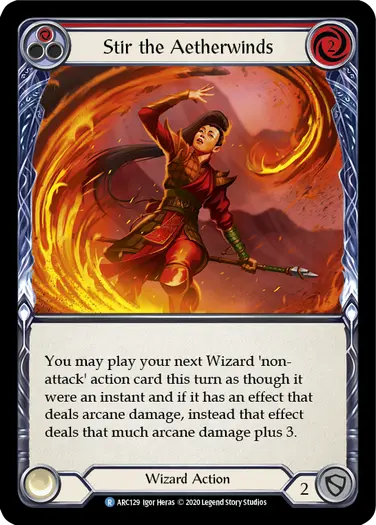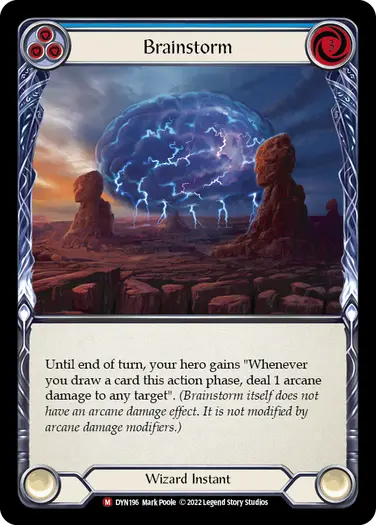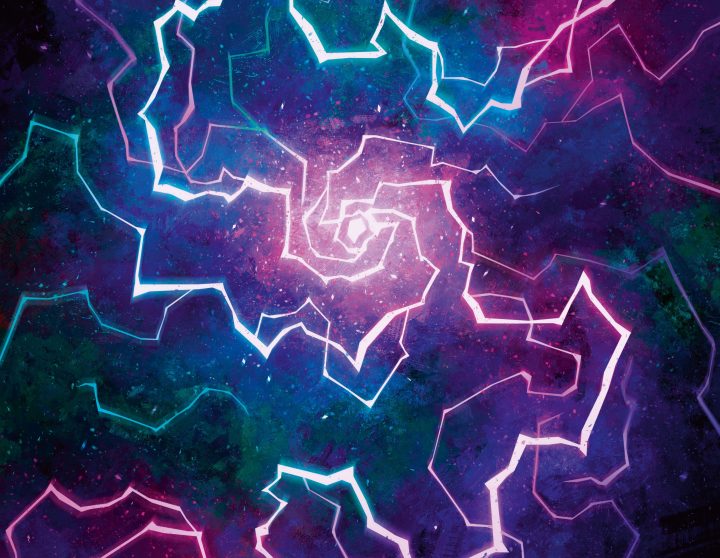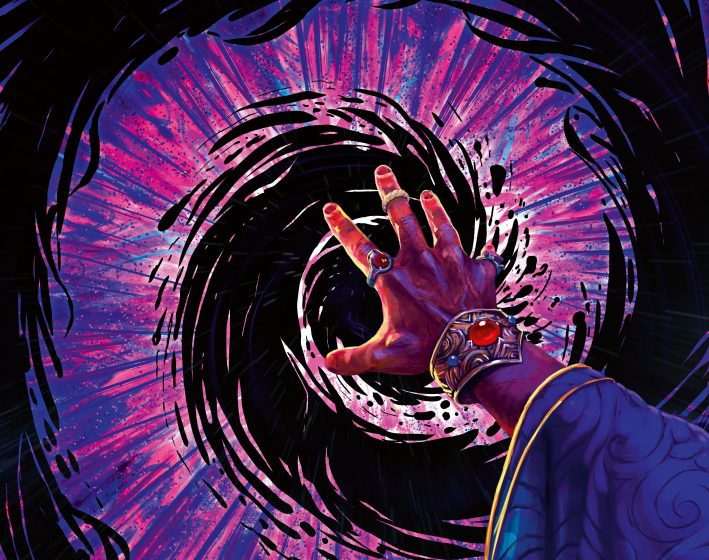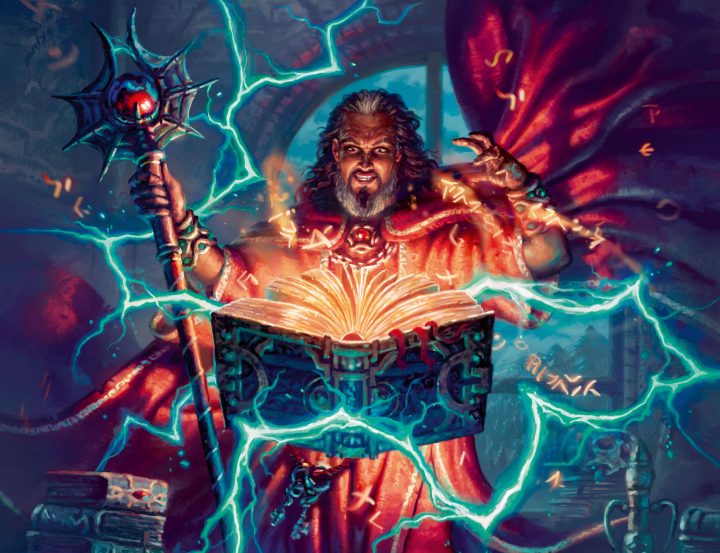Here for another Rules Reprise, the Rules team is covering some edge case interactions with Rosetta among the wider card-pool, as well as some throwback interactions to some other recent cards with hot-topic interactions (Savage Sash and Blaze, Firemind).
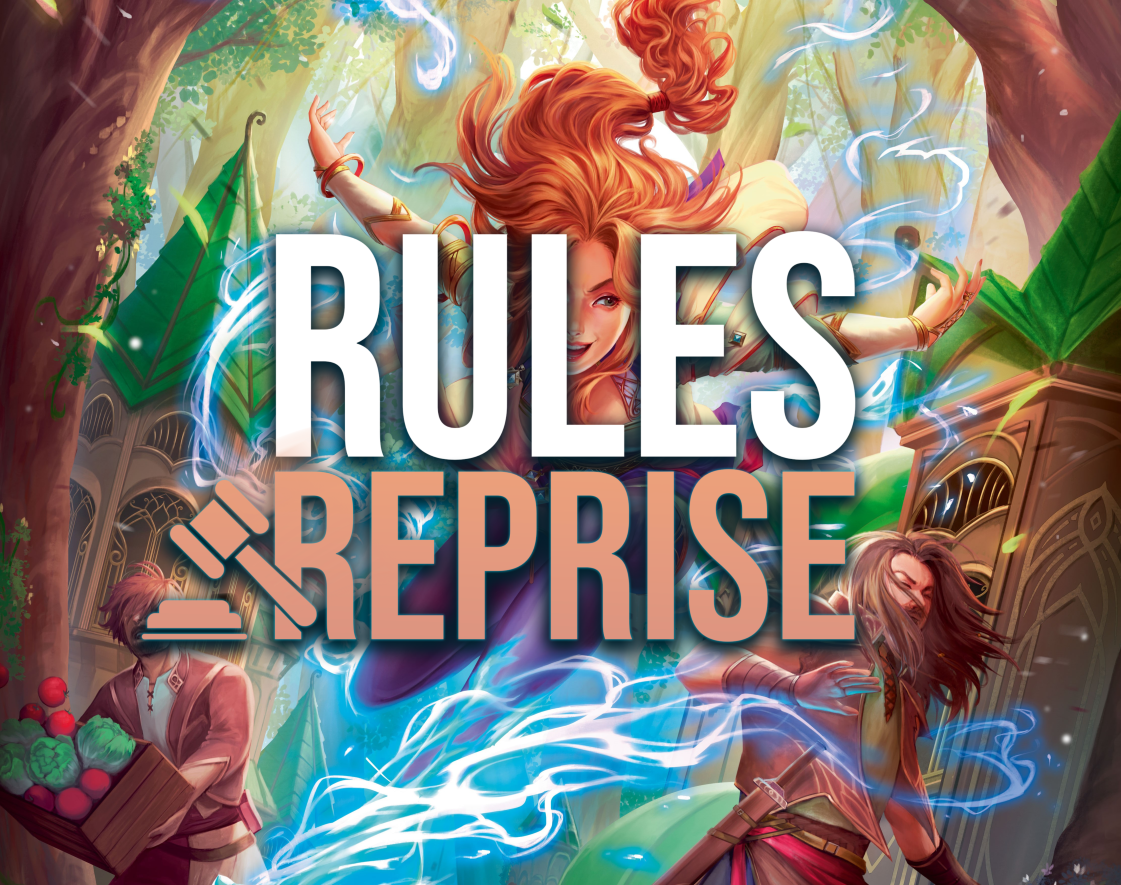
When do I deal damage with Arc Lightning?
In general, whenever you gain an action point from go again.
Arc Lightning generates a delayed-triggered effect that lasts for the remainder of the turn and will trigger to deal 1 arcane damage to any target. To trigger this effect, you need to successfully “go again”, meaning you will need to resolve “go again” on a card/ability that you play/activate AND gain the action point from it.
Because Arc Lightning itself also has “go again”, resolving its own “go again” ability can trigger the delayed-triggered effect. This is because when resolving a card, you will resolve the card and its effects in the order written on the card. Without going into too much detail about the intricacies, "go again" is always the final ability to resolve on a card, so it will occur AFTER the delayed-trigger has been created.
It's also important to note that if you were to resolve Arc Lightning on your opponent’s turn (e.g. playing a card as though it were an instant), you would not trigger Arc Lightning from resolving “go again” because you cannot gain action points on your opponent’s turn, thus you will not deal damage.
Tyler plays and resolves Arc Lightning. Arc Lightning creates the delayed-triggered effect, and then go again on Arc Lightning resolves, triggering that same effect. When the trigger is added to the stack, Tyler chooses Nic as the target for the 1 arcane damage. The trigger then resolves and Tyler deals 1 arcane damage to Nic.
If I deal more than 3/2/1 damage with Glyph Overlay and I have no Sigils, who shuffles?
No one shuffles. There are no auras with Sigil in their name, so it's undefined whose deck needs to be shuffled. Therefore, nobody needs to shuffle their deck.
This is different from other shuffle-based effects where you are explicitly instructed to shuffle your deck (e.g. "shuffle [card] into your deck"). In these cases, even if there's nothing to shuffle into your deck, you must still shuffle because it is established that you (the controller of the card) have been asked to shuffle.
Tyler has 0 cards in hand and plays Plan for the Worst. They fail to find any traps in their deck and have no cards in their hand to shuffle into their deck. They must still shuffle because they've been instructed to by the phrase "shuffle [card(s)] into your deck" which explicitly declares whose deck needs to be shuffled.
Does the combat chain close when I return Gone in a Flash to my hand?
It depends…
When Gone in a Flash resolves on the stack and becomes an attacking card on the combat chain, it triggers and creates a delayed-triggered effect which allows you to return it to hand the next time you play an instant on the same chain link.
If you return Gone in a Flash to your hand BEFORE you deal damage, then yes. The chain link has not resolved and the card no longer exists as the attack on the combat chain, so the combat chain closes.
If you return Gone in a Flash to your hand AFTER you deal damage, then no. The chain link has been resolved, so it doesn't matter what happens to the card. In this case specifically, if Gone in a Flash has go again before it returns to you hand, you'll still get an action point when you move from the resolution step to the link step of combat.
A similar thing happens when you play Electromagnetic Somersault, and return an attack action card you're attacking with to your hand. Because it occurs AFTER you deal damage, the chain link has already resolved so the combat chain does not close and if the attack has go again, you'll still gain an action point when you move to the link step of combat.
Tyler's has a Lightning Press (red) in their hand. Tyler plays Gone in a Flash. Here are the following scenarios for playing Lightning Press:
- Play Lightning Press before Gone in a Flash (or its attack trigger) resolves on the stack (layer or attack step). Nothing happens because the delayed-trigger isn't active yet.
- Play Lightning Press after the attack trigger resolves on the stack (attack, defend, or reaction step), but before damage is calculated. Tyler may return Gone in a Flash to hand. If they do, the combat chain closes and Lightning Press fizzles. If they don't, Lightning Press resolves as normal.
- Play the Lightning Press after damage is calculated. Tyler may return Gone in a Flash to hand. If they do, the combat chain does not close, but Lightning Press will fizzle. If they don't Lightning Press resolves as normal.
Gone in a Flash + Mark of Lightning + Channel Lightning Valley… what happens?
The combat chain closes, Gone in a Flash deals 1 damage to the defending hero, and you draw a card.
I just have to say… I love these sorts of interactions because they explore incredibly interesting and deep aspects of the comprehensive rules, pushing us further to make the rules more concrete and clear. So let's break this down. The situation is:
- Tyler attacks Nic with Gone in a Flash.
- Nic defends with a card from hand.
- Mark of Lightning triggers (layer 1)
- Tyler plays Channel Lightning Valley (layer 2)
- Gone in a Flash triggers (layer 3)
When layer 3 resolves, Tyler chooses to return Gone in a Flash to their hand. This causes a game state action to occur and transition the game to the Close Step of combat where the combat chain will close. At this point, two things are still true until the combat chain finishes closing:
- There is still a card from hand defending against Tyler's Lightning attack (Last Known Information is used here)
- There is still a defending hero (the chain link hasn't resolved)
As part of the combat chain closing, we resolve the remaining layers on the stack. When layer 2 resolves, Channel Lightning Valley becomes a permanent under Tyler's control. When layer 1 resolves, we check whether the state-based condition of the trigger is still met (Whenever a Lightning or Elemental attack you control is defended by a card from hand). Because it is, we follow through with the effect, Tyler chooses to destroy Mark of Lightning, and the Gone in a Flash deals 1 damage to Nic. Even though the attack doesn't exist anymore, the attack was referenced by layer 1 when the effect first triggered, so Last Known Information is used when dealing this damage (e.g. relevant for effects like Ball Lightning).
Finally, this will trigger Channel Lightning Valley to draw Tyler a card, and the combat will come to a close.
If I attack/defend with Ten Foot Tall and Bulletproof, then transform, do I still have -2{i}?
No. But there is a difference between "transforming" into a hero and "becoming" a hero.
When you "transform" into a hero or demi-hero, you replace your hero card with an entirely new hero card. Any effects that applied to your previous hero card do not carry over. This includes effects like Ten Foot Tall and Bulletproof or Dishonor.
Tyler is playing as Levia, has 14 life total, and 1 card with blood debt in their banished zone. Tyler attacks Nic with Ten Foot Tall and Bulletproof. Tyler's hero, Levia, gets -2{i} during their next end phase. At the beginning of Tyler's end phase, blood debt triggers, taking their life total down to 13. Blasmophet, Levia Consumed triggers, and Tyler transforms their hero, Levia, into Blasmophet, Levia Consumed. Because their hero card has been replaced completely, Tyler's new hero card (Blasmophet, Levia Consumed) does not have -2{i}, and Tyler draws up to 4 cards in hand during that end phase.
When you "become" a hero, your hero remains; but its properties change to another hero. Effects that applied to you before, continue to apply, even though you've copied another hero's properties.
Nic is playing as Shiyana, Diamond Gemini. Nic defends Tyler's attack with Ten Foot Tall and Bulletproof. Nic's hero, Shiyana, gets -2{i} during their next end phase. At the start of Nic's turn, Shiyana triggers, and Shiyana becomes a copy of Tyler's hero. During that end phase, Nic's hero (Shiyana – who has copied Tyler's hero) still has -2{i} because the hero card is still the same object, it just has the properties of Tyler's hero.
Do +{p} effects allow me to discount card cost with Savage Sash?
Yes, almost all +{p} effects will apply to cards as they're played, before costs are calculated and paid.
Here's the abridged rundown of how playing a card works:
- Put the card on the stack – it's under your control and you're playing it
- Declare parameters, targets, modes, etc
- Check if it's legal to play
- Calculate resource costs – work out the cost of the card
- Pay resource costs
- Calculate effect costs
- Pay effect costs
- The card is now played
Note that when you declare a card, effects that apply to the next card you play, or effects that apply to cards/attacks you control, are applied here (attack action cards on the stack are considered attacks). After the effects have been applied is when we calculate the resource cost of the card, and Savage Sash can discount the card based on whether it is an attack action card with 6 or more {p}.
This ordering is a necessary component of how Flesh and Blood operates, because:
- Determining whether a card is legal to play must happen AFTER effects are applied to a card. I.E. an effect might change whether that card is legal to play.
- Determining whether a card is legal to play must happen BEFORE you try to pay for that card. I.E. You don't want to start paying for a card before finding out it's not possible to even play.
Tyler activates Savage Sash, then plays Bloodrush Bellow (discarding a 6{p} card), and Come to Fight (red). Tyler plays Swing Fist, Think Later (blu). While calculating costs, Swing Fist, Think Later has a total of 7{p}: 2 base, +2 from Bloodrush Bellow, +3 from Come to Fight. Because it has 7{p}, Savage Sash will reduce its cost to play by {r}. Therefore Tyler does not need to pay any resources to play Swing Fist, Think Later.
How much does it cost for Blaze, Firemind to banish [insert card here]?
It depends.
Blaze is specifically looking for the card to directly generate an effect that deals arcane damage. Effects that modify arcane damage aren't the same as effects that deal arcane damage, and some other small edge cases need to be considered. Here is a general rule of thumb when figuring out the value of X needed for Blaze's ability:
- The arcane damage must be directly generated from resolving the card on the stack.
- It doesn't matter if the arcane damage is conditional.
- For "deal X arcane damage", then X=0.
- If it has two different values for damage, then X can be either of those values.
- Replacement effects that change the arcane damage dealt, don't change the value needed for X.
Here are some Wizard cards and the values of X needed to banish them:
- Chain Lightning: X = 3. It doesn't matter that the effect of arcane damage is conditional, the card may still generate an arcane damage effect when it resolves on the stack and the value of that damage is 3.
- Scour: X = 0. Because Scour's value of arcane damage is undetermined when it's in your hand, we default it to 0 which makes the value of X needed to be 0.
- Forked Lightning: X = 2. Even if the arcane damage is dealt to separate targets, the effect is written to deal 2 arcane damage so we take that as the value of X.
- Emeritus Scolding (Red/Yel/Blu): X = 4/3/2 respectively. The replacement effect that changes the arcane damage amount on an opponent's turn is not considered when looking at the value of X needed to banish this card.
- Comet Storm // Shock (hypothetical): X = 5 or 1. Although this card can't be used in Blaze, it would require either the value of X to be 5 or 1 because it generates two separate effects of arcane damage that deal 5 or 1 respectively. The highest number is not required to be paid.
Here are some Wizard cards you CAN'T banish with Blaze:
- Stir the Aetherwinds. This does not deal any arcane damage; it just increases the arcane damage that another card would do.
- Brainstorm. This is an instant and therefore doesn't meet Blaze's ability requirements. But as a hypothetical example let's pretend it's a non-attack action card. It does not directly deal arcane damage; it gives your hero a triggered ability that deals arcane damage.
